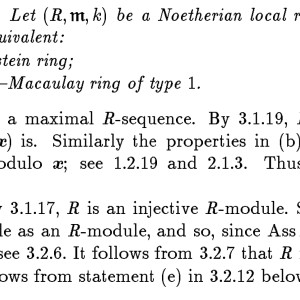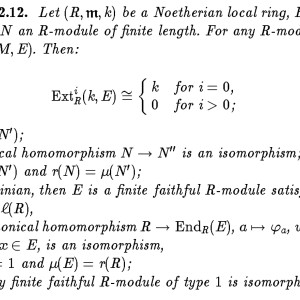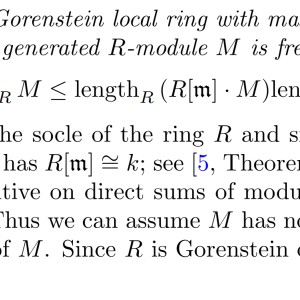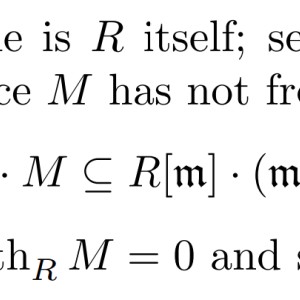Length of finitely generated module over $0$-dimensional Gorenstein local ring
Please see attached images: Can someone slowly walk me through the details of the proof of Lemma 4.1 using basic commutative algebraic arguments and definitions?
1) Why $R[\mathfrak{m}] \cong k$? (where $k$ is the residue field of $R$)
2) I know length is additive on direct sums, but how is the RHS of the inequality additive as well, since it is a product?
3) Why does the inequality coincide when $R$ is the module over itself?
4) How does $R$ being Gorenstein of dimension $0$ imply that $R$ is the only indecomposable injective module, and why is its injective hull free as a result?
5) Why $M \subseteq \mathfrak{m}F$?
6) Why does $M=0$ imply the desired result?
 Jbuck
Jbuck
152
Join Matchmaticians Affiliate Marketing
Program to earn up to a 50% commission on every question that your affiliated users ask or answer.
- closed
- 1501 views
- $44.00
Related Questions
- Clock Problem
- Please help me with this math question
- Fields and Galois theory
- Use Rouche’s Theorem to show that all roots of $z ^6 + (1 + i)z + 1 = 0$ lines inside the annulus $ \frac{1}{2} \leq |z| \leq \frac{5}{4}$
- Artin-Wedderburn isomorphism of $\mathbb{C}[S_3]$
- Get area of rotated polygon knowing all coordinates and angle.
- Prove that a reduced Gorenstein ring of Krull dimension 1 is not a complete intersection ring.
- Representation theory 2 questions




